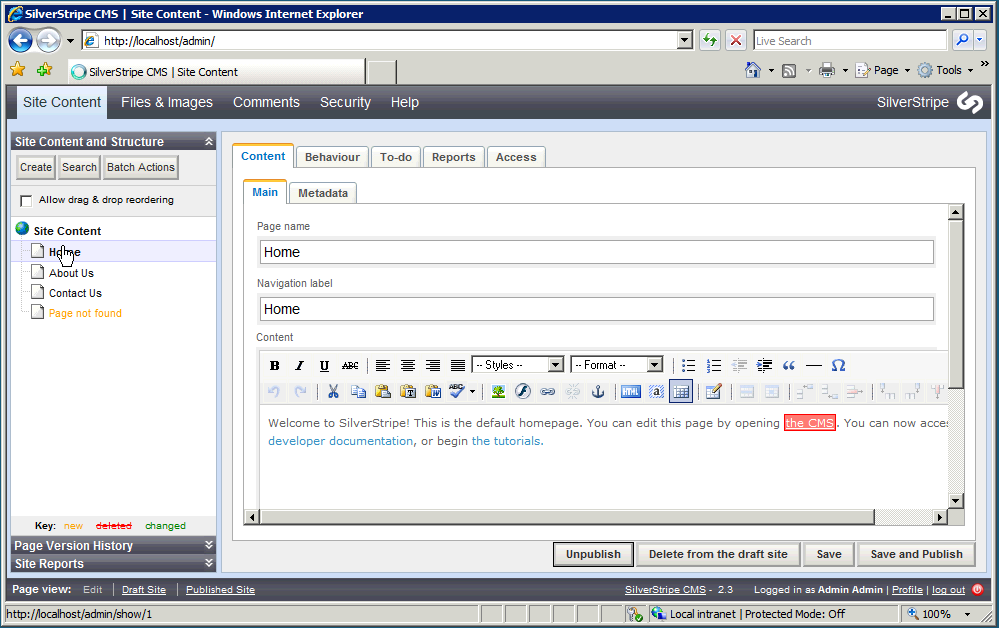Install Microsoft Cms Html Editor Toolbar
Posted By admin On 31/05/18From HTML WYSIWYG Edit ActiveX Control for CMS and CRM designers. Features table editing, CSS support, customizable language localizatation. FTP class can upload images to a web server automatically or, can be used independently. HTML DOM branch status bar allows manipulation of tags, object properties and CSS classes of any HTML node. Compatible with any environment that supports ActiveX components such as VB6, Microsoft Office 2000+, and VS.NET. Version 3.1.1 may include unspecified updates, enhancements, and bug fixes.

Product portfolio of rich text editors and collaborative editing solutions delivered through fast and secure cloud services. Installation of the ActiveX controls and tool for the CMS HTML Editor. I've managed how to install the controls. Saathi Tere Naam Ek Din Jeevan Kar Jayenge Song Download more. 'Microsoft CMS HTML Editor Toolbar' ActiveX.

This tutorial describes how to use features found in Microsoft Internet Explorer 5.5 or later to create an HTML Editor Application. The application you create in this tutorial contains an editable region where users can type and format text using all of the standard formatting commands. For example, users can make the text bold or italic, change the font size, and make bulleted or numbered lists. A toolbar provides the formatting buttons, buttons for opening and saving files, and drop-down list boxes for font and block formatting selections. A menu allows alternate access to the functionality provided by the toolbar. As of Internet Explorer 6, you can also use the object to change the face or color of the font. With this HTML Editor Application, users can create HTML documents and save them to disk in either HTML or text format.
If saved as an.htm file, the documents are viewable in Windows Internet Explorer or in the HTML Editor Application. Files saved as.txt can be viewed in any text editor. This tutorial demonstrates how to do the following: • Create and use editable regions with the attribute. • Use formatting and the method. • Use the, as well as a menu element behavior and an behavior that displays a splash screen. • Use the HtmlDlgSafeHelper object to access the fonts and block formats on a user's machine, and to display the color dialog box.
Internet Explorer 6 introduces the HtmlDlgSafeHelper object. You can use this kind of application to allow 'what you see is what you get' (WYSIWYG) content editing of Web sites by users. You can also use this type of application as an editor for an Internet e-mail program. • • • • • • • • • • Requirements and Dependencies Developers who want to create an HTML editor as described in this tutorial should be familiar with Microsoft JScript and Dynamic HTML (DHTML). Knowledge of is also helpful. The control used in this tutorial to display the Open and Save As dialog boxes is a licensed control that requires a valid design-time license. You can run the sample, but you cannot create this functionality unless you have Microsoft Visual Basic or Microsoft Visual InterDev installed on your development machine.
For more information, see. You can use any HTML development environment, such as Visual InterDev, to complete this tutorial. Visual InterDev is a good choice because it provides a design-time license for the CommonDialog control. Most of the technology described in this tutorial is supported by Internet Explorer 5.5 or later, with the notable exception of the HtmlDlgSafeHelper object, which requires Internet Explorer 6.
This tutorial requires a number of dependent files in order to function properly, including icons for the toolbar buttons, and two. All of these files are included in the sample download. Before you get started with the tutorial, you need to download the sample. Follow the steps on the download page before continuing to Implementation Steps. Implementation Steps This section describes, step-by-step, how to create a WYSIWYG HTML Editor HTA. • • • • • • Step 1: Create the HTML file The HTML file that you create in this step serves as the foundation for the features you add as the tutorial progresses. • Create an HTML file.
This file should contain the standard HTML tags, including,, and. You can also add a element in the HEAD section if you like.
The following code sample shows what the HTML should look like. Note As you work through the tutorial, be careful not to name any of the files you create HTML_Editor, or you might overwrite the sample application. The sample application should be left as a reference to consult while working through this tutorial.